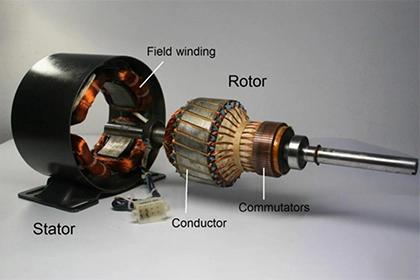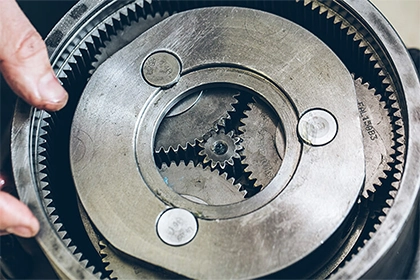
How to replace an ac fan motor?
Whether it is industrial production, commercial development, or home life, fan motors are key components to ensure effective circulation of air throughout the space. But over time, the fan motor can fail due to wear or electrical problems and need to be replaced.
Air conditioning systems are integral to maintaining comfort in residential and commercial settings. The fan motor is a critical component that ensures air is circulated effectively throughout the space. Over time, fan motors may fail due to wear and tear or electrical issues, necessitating a replacement. This essay provides a step-by-step guide to replacing an AC fan motor, ensuring the process is executed with precision and safety.
Preliminary Considerations
Understanding the AC System
Before attempting to replace a fan motor, it is crucial to have a basic understanding of the air conditioning unit's components. The fan motor is typically located in the condenser unit outside the home or in the air handler inside.
Safety Precautions
Safety must be the foremost concern. Ensure all power to the unit is turned off at the breaker before beginning any work. Use caution and wear appropriate protective gear, such as gloves and eye protection.
Tools and Materials Needed
Gather all necessary tools and materials before starting the job. This includes a screwdriver, wrenches, a multimeter, the replacement motor, and possibly a capacitor if the motor requires a different one.
Step-by-Step Replacement Procedure
Disconnecting Power and Accessing the Motor
- Power Disconnection: Confirm that the power supply to the AC unit is completely shut off.
- Accessing the Motor: Remove the access panel on the condenser unit or air handler to reveal the fan motor.
Removal of the Old Motor
- Disconnect Wiring: Carefully disconnect the wiring harness or individual wires, noting their configuration for reconnection to the new motor.
- Unfastening the Motor: Use a wrench to loosen and remove the bolts or screws securing the motor to the unit.
- Extracting the Motor: Remove the fan blade from the motor shaft, often secured by a set screw, and then lift the motor out of the unit.
Installation of the New Motor
- Positioning the New Motor: Place the new motor into the unit, aligning it with the mounting holes.
- Securing the Motor: Fasten the motor using the bolts or screws removed earlier.
- Attaching the Fan Blade: Reattach the fan blade to the motor shaft, ensuring it is secure but not overly tightened.
Reconnecting Electrical Components
- Wiring the Motor: Refer to the previous configuration to connect the wires to the new motor. If there is a capacitor change needed, replace the old capacitor with the new one, ensuring the correct polarity and connections.
- Ensuring Secure Connections: Double-check all electrical connections for security and proper placement.
Testing the New Motor
- Initial Power-Up: Restore power to the AC unit and activate the system.
- Observation: Observe the fan motor's operation, listening for unusual noises and ensuring the fan is rotating correctly.
- System Check: Verify that the air conditioning system is producing cool air and that the system cycles on and off properly.
Final Considerations
Calibration and Settings
After installing the new motor, it may be necessary to calibrate the system or adjust settings to ensure optimal performance.
Cleanup and Maintenance
Replace the access panel and clean up any debris or tools from the work area. Regular maintenance can extend the life of the new motor.
Documentation
Keep a record of the replacement, including the date and any warranty information for the new motor.
Conclusion
Replacing an AC fan motor is a detailed process that requires technical knowledge, precision, and adherence to safety protocols. By thoroughly understanding each step—from preparation through testing and final considerations—technicians can ensure a successful replacement that restores the AC system to its full operational capacity.



Leave a Comment